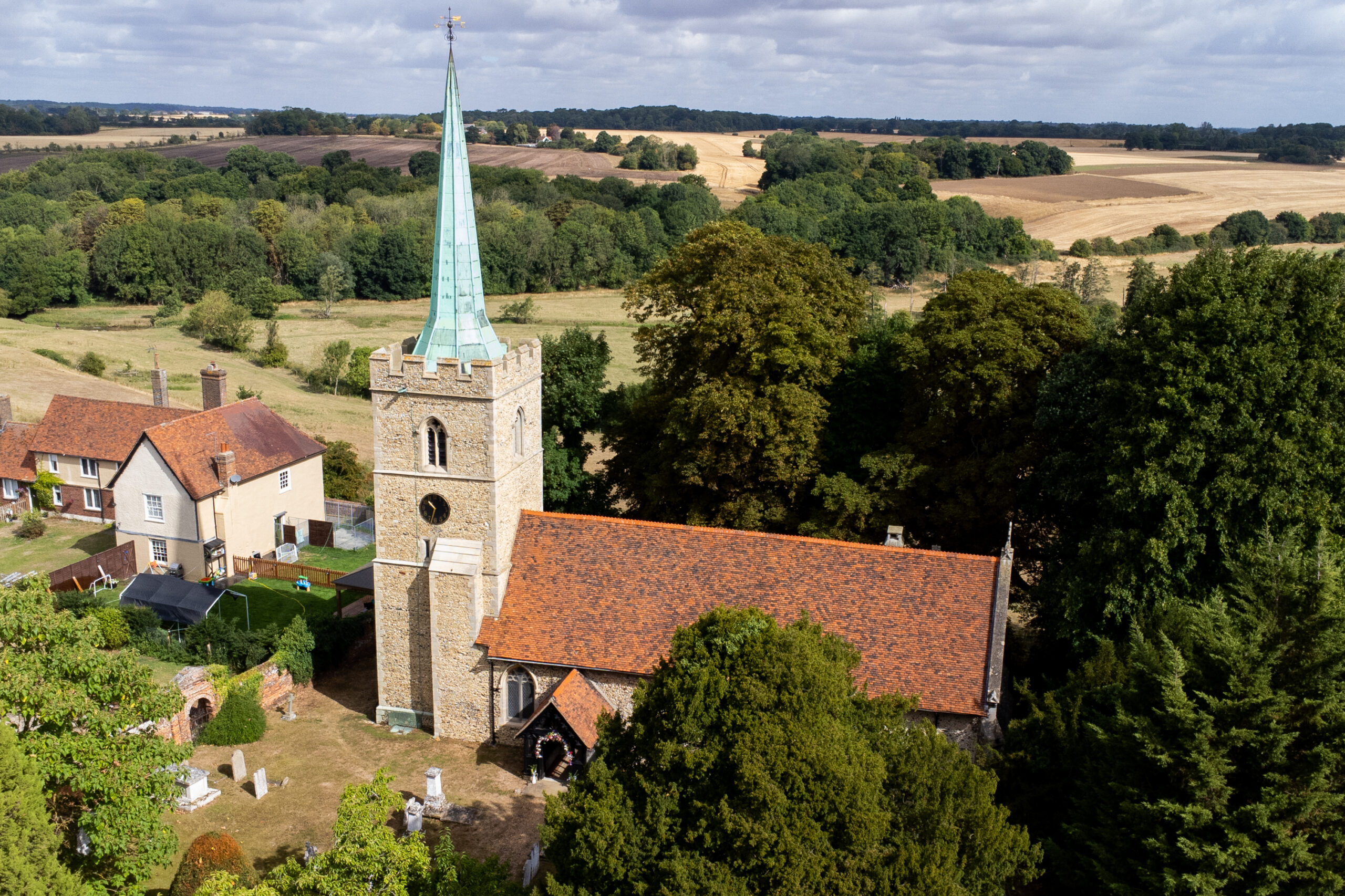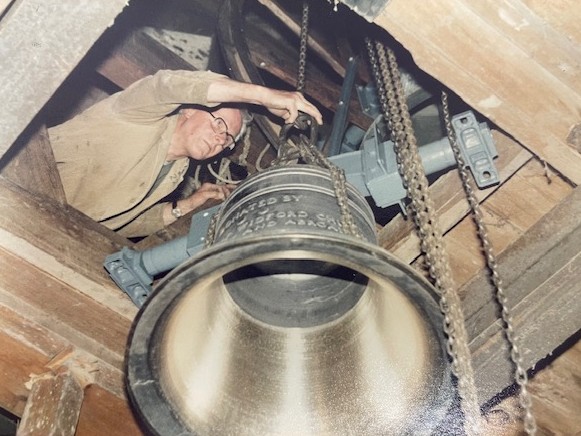Widford, Herts, St John the Baptist (GF), 6, 7-0-25 in Ab Major Mon 19h45 TL413158
The bells of St John the Baptist Widford are a matter of parochial and civic pride. They are rung as often as possible for major services, weddings and national events. Occasionally, they are rung at funerals (usually half muffled). The peal comprises a relatively light ground floor ring of six tuned in Ab Major. There is more information about current usage of the bells on our main website, here.
Bells have been used in Widford to communicate and reinforce Christian rubrics for about 600 years or 25 generation of Widfordians. Their use which continues to this day has been to mark out and signal the ecclesiastical calendar, the parochial calendar of services, the rural way of life and those human milestones of birth, baptism, marriage and death.
Originally rung as a rubric by the medieval novices, deacons, clerks and monks associated with the adjacent Bermondsey Priory holy house now Widfordbury.
During the reformation many holy houses were dissolved and asset stripped – bell metal was a commodity; an alloy of copper and tin it had an intrinsic value. Consequently, surviving early bells are a rarity.
Widford now has a ring of six bells of varying date (see the table below). However, one of our oldest bells “No. 5” is almost certainly pre-reformation late 14th or early 15th century which makes it quite special – whilst it has no particular marks, we are reasonably confident it was cast here in Widford. Transporting soft metal bells that could be cracked on the back of a cart by a rut or a ditch was too risky. Consequently the art of the itinerant bell founder was born.
Widford has a Bell Lane, not named after the now defunct eponymous public house. Its probable that the medieval livestock pens shown on ancient parish cartographic maps adjacent to what is now Swan Barn were the sites of the mobile foundry. Notably, it is not that far from where Widford’s old forge is today. The lane was almost certainly connected to foundry works specific to Widford. Particularly pertinent to note is that, at a time before the development of the village, Bell lane would have looked directly downhill onto the church and tower in line of sight.
Some of our other bells are also reasonably local. Robert Oldfield was an exclusive Hertfordshire and Essex founder based in Hertford who cast two in 1624 before more bells to augment the ring to six were added in the Victorian era, courtesy of famous founders Taylors of Loughborough and Messrs Mears & Stainbank (which became Whitechapel).
Bells have always been a matter of civic pride, with parishioners often contributing cash or metals for the founding of their parish instruments. Most recently, putting aside the successful 2023 Coronation Sallies campaign, in 1985 the parish got together to refurbish and retune the bells. At the time they raised a little over £9000 in just over six months – something like £50,000 today. Out of the old peal of six the smallest five of which were retuned to Ab major and the cracked tenor bell was recast to form a new treble bell sounding the submediant note of F in the Ab major scale. The new tenor bell (previously number 5) weighs just over 7 hundredweight or 350Kgs. The new treble is inscribed as a gift of the Friends of Widford Church and actually has two £1 coins from 1985 cast into it, one showing the head of Her Late Majesty Queen Elizabeth II and the verso – the device of lions for England – on the other.
| Bell | Imp. Weight | Note | Date | Founder |
| Tenor | 7-0-25 | Ab | 1624 | Robert Oldfield Hertford |
| 5th | 6-1-20 | Bb | c.14th/15th C | Unknown poss. Widford |
| 4th | 5-0-23 | C | 1624 | Robert Oldfield Hertford |
| 3rd | 5-1-00 | Db | 1869 | Taylor & Co Loughborough |
| 2nd | 4-0-10 | Eb | 1890 | Mears & Stainbank Whitechapel |
| Treble | 4-0-05 | F | 1985 | Whitechapel |





